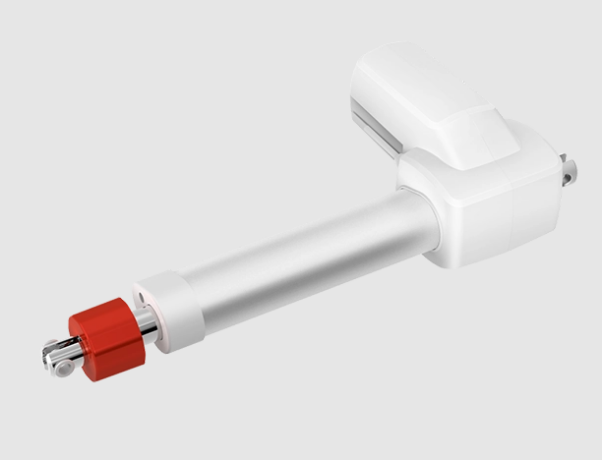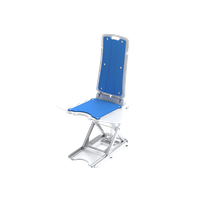- Home
-
- TF Integrated Workstation
- TT Integrated Station
- TS Single-Person Station
- TO Single-Person Station
- Advanced Office Table
- Manager Table
- Odette Conference Table
- Lifting White Board
- Lifting Podium
- Working Port
- Zen Standing Desk
- Lifting Coffee Table
- Home Standing Desk
- Nature Standing Desk
- Invictus Gaming Desk
- Study Desk
-
-
- Electric Hospital Bed
- Image Equipment
- Examination Bed/Clinic Bed
- Operation Table and Chair
- Infant Incubator
- Independent Weighing System
- Home Care Bed
- Patient Lift
- Wheelchair
- Toilet Lift
- Bath Lift
- Shower Trolley
- Smart Rollator Walker
- Ophthalmic Workstation
- Treatment Chair
- Facial Chair
- Traction Table
- Massage Chair
- OT Training Equipment
- Stand-up Application
- Rehabilitation Robot
-
-
- Photovoltaic Application
- Photothermal Application
- Energy Storage Container
- Tractor
- Seeder
- Fertilizer Spreader
- Harvester
- Rotary Cultivator
- Climate Control System
- Automatic Feeding System
- Excavator
- High Altitude Work Platform
- Garbage Truck
- Street Sweeper
- AMR Automated Guided Vehicle (AGV) and Autonomous Mobile Robot (AMR)
- Forklift Accessories
- Palletizing Collaborative Robots
- Packaging Machine
- Mobile Light Tower
-
-
Patient Lift Systems Types Benefits and How to Choose
Views: 0 Author: Site Editor Publish Time: 2025-06-10 Origin: Site
A patient lift system is a specially designed mechanical or powered device used to assist in the safe transfer of individuals with limited mobility. Whether moving a patient from a bed to a wheelchair, or assisting with bathing or pool access, a patient lift reduces the risk of injury for both the patient and the caregiver. These systems play a crucial role in hospitals, rehabilitation centers, nursing homes, and increasingly in private residences where aging in place or home care is prioritized.
As the demand for home healthcare and accessible environments grows, patient lifting devices have become essential tools that promote mobility, dignity, and independence. There are a variety of patient lift types available to suit different needs, including manual and electric lifts, patient lift chairs for home use, and handicap pool lifts that ensure accessibility in aquatic environments. Understanding these options can help caregivers and patients choose the right equipment for safer, more effective mobility support.
1. What Is a Patient Lift System?

A patient lift system is a mechanical or powered patient lifting device designed to safely transfer individuals with limited mobility from one position or surface to another—such as from a bed to a wheelchair, or from a chair to a bath. These devices reduce the physical effort required by caregivers and minimize the risk of injury for both patients and assistants.
How does a patient lift work? Most systems use a sling or harness that securely supports the patient, while a lifting arm—manually or electrically powered—raises and moves the individual to the desired location. Some lifts run on casters, others are ceiling-mounted, and many are equipped with adjustable features.
The benefits of a patient lift include increased safety, enhanced dignity for the patient, and significant reduction in physical strain for caregivers. In both home care and professional healthcare settings, patient lift systems are essential tools for effective and compassionate mobility assistance.
2. Main Types of Patient Lift Systems
There are many types of medical lifts, each designed for specific needs and environments. Understanding the differences is crucial when selecting the best patient lift system.
(1)Manual Patient Lifts
Manual lifts operate using hydraulic pumps or hand cranks. They are cost-effective and ideal for short-term or backup use in case of power outages. Despite their simplicity, they provide reliable assistance for basic patient transfers.
(2)Electric and Battery-Powered Lifts

These powered patient lift types offer push-button controls for smooth lifting and lowering, often via rechargeable battery packs. They're perfect for routine use in homes or institutions, especially for heavier patients or when caregiver strength is limited.
(3)Ceiling (Overhead) Track Lifts
These patient lifting devices are mounted to ceiling tracks, allowing for efficient movement across rooms without occupying floor space. Ceiling lifts are highly recommended for long-term care settings and offer superior convenience and safety.
(4)Sit-to-Stand Lifts
Sit-to-stand lifts assist patients who have some weight-bearing ability. They help transition patients from sitting to standing and vice versa—useful in rehabilitation or for those regaining mobility after surgery.
(5)Patient Lift Chair for Home
A patient lift chair for home is a reclining seat with a powered mechanism that gently tilts forward to assist the user in standing up or sitting down. These are popular in home environments for seniors and individuals with chronic mobility challenges, offering both comfort and independence.
3. Specialty Lifts: Pool and Handicap Lifts
(1) Pool Lift

A pool lift is a waterproof patient lifting device designed to lower and raise individuals in and out of swimming pools or hot tubs. These are especially important for physical therapy, rehabilitation, and leisure access. Pool lifts are available in manual and powered versions and can be permanently installed or portable.
(2)Handicap Pool Lift
A handicap pool lift goes a step further by meeting ADA (Americans with Disabilities Act) compliance standards for public aquatic facilities. These lifts offer reliable, secure access to pools and spas, promoting inclusion and safety. They come in a range of styles, including fixed, portable, battery-operated, and water-powered models, making them suitable for both public and residential pools.
4. How to Choose the Right Patient Lift?

There are many patient lifting linear actuators on the market, such as Linear Actuator JC35L28, JC35L12, etc.Selecting the right patient lift system depends on several critical factors:
Mobility level of the patient – Can they bear weight or sit upright?
Environment – Is it for home care, a hospital, or outdoor use such as pools?
Lift capacity – Different models support different weight limits.
Frequency of use – Consider durability and battery life for frequent transfers.
Caregiver availability – Some lifts require two-person operation, while others can be used solo.
For home settings, a patient lift chair for home or portable electric lift may offer the perfect balance of convenience and comfort. In institutional or rehabilitation environments, ceiling track lifts and sit-to-stand options may be more suitable.
Matching the right patient lift types with individual needs ensures better care outcomes, safety, and satisfaction for everyone involved.
5. Safety Guidelines and Maintenance
Proper maintenance and safe handling are essential for any patient lifting device.
Regular Inspections: Check slings, frames, and electrical components for signs of wear or malfunction.
Safe Operation: Caregivers should be trained in correct lift usage, including proper sling application and weight limits.
Troubleshooting: Address battery issues, hydraulic fluid levels (for manual lifts), and alignment problems promptly to prevent failures.
Following these practices can greatly extend the lifespan of your patient lift and ensure reliable, secure transfers.
6. Future Trends in Patient Lifting Technology
Innovation in mobility assistance is evolving rapidly:
Smart Lifts: New patient lift systems are integrating smart sensors, remote control access, and mobile app compatibility to track lift usage and enhance safety.
Ergonomic Designs: Improved comfort, intuitive controls, and lightweight materials are making lifts more user-friendly.
Portable Options: Foldable, lightweight patient lift chairs for home and easily transportable handicap pool lifts are expanding choices for personal and travel use.
As technology advances, patients and caregivers can expect more personalized, intelligent, and efficient lifting solutions tailored to modern lifestyles.
Conclusion
Choosing the right patient lift system is a vital step toward ensuring safety, comfort, and enhanced mobility for individuals with limited physical capabilities. With so many types of medical lifts available—from home-use chairs to advanced pool lift systems—there’s a solution for nearly every care scenario.
Whether you need a compact patient lifting device for a home environment or a specialized handicap pool lift for aquatic therapy, taking the time to understand your options is key to long-term success.The JIECANG linear drive product platform not only provides patient lift related products and services, but also provides drive and intelligent control solutions for related industries such as smart office, medical care, smart home, and industrial automation.For expert guidance and personalized recommendations, contact a mobility specialist or explore our curated selection of high-quality patient lift models designed to meet diverse needs.
Patient Lift System FAQs:
1.Is it illegal to use a Hoyer lift with one person?
Can a Hoyer Lift Be Used by One Person? | Barrier Free Store
As such, one of the first questions asked by someone who is considering the purchase of a Hoyer lift is whether or not it can be used by one person. While every situation is unique, in most cases the answer is yes.
2.How much does a lift cost per day?
Boom lift prices will vary depending on power type as well. Compared to the above diesel boom, an electric boom of the same size will cost $242/day. Likewise, booms with larger lifts will cost more. A 60-foot diesel, duel-fuel telescopic boom lift costs $355/day or $2,245/month to rent.
3.Can a doctor write a prescription for an adjustable bed?
You need a doctor's prescription to purchase an adjustable bed if you're planning for Medicare or Medicaid to cover part of the cost. If you plan to pay full price for the bed, no prescription is necessary.
Related Articles
QUICK LINKS





























